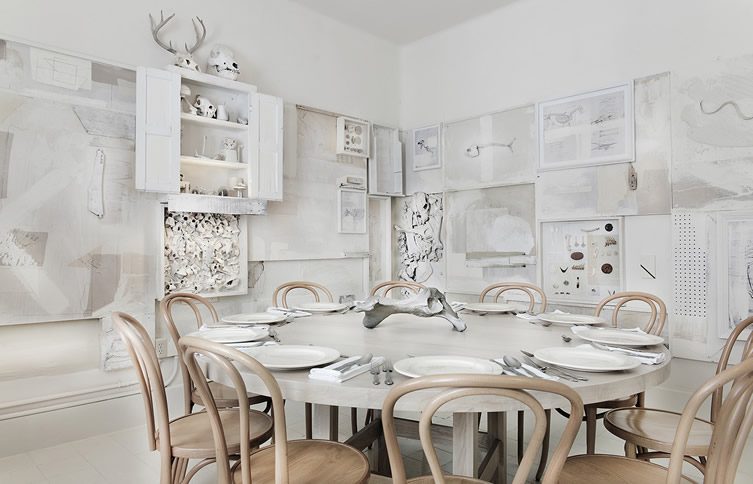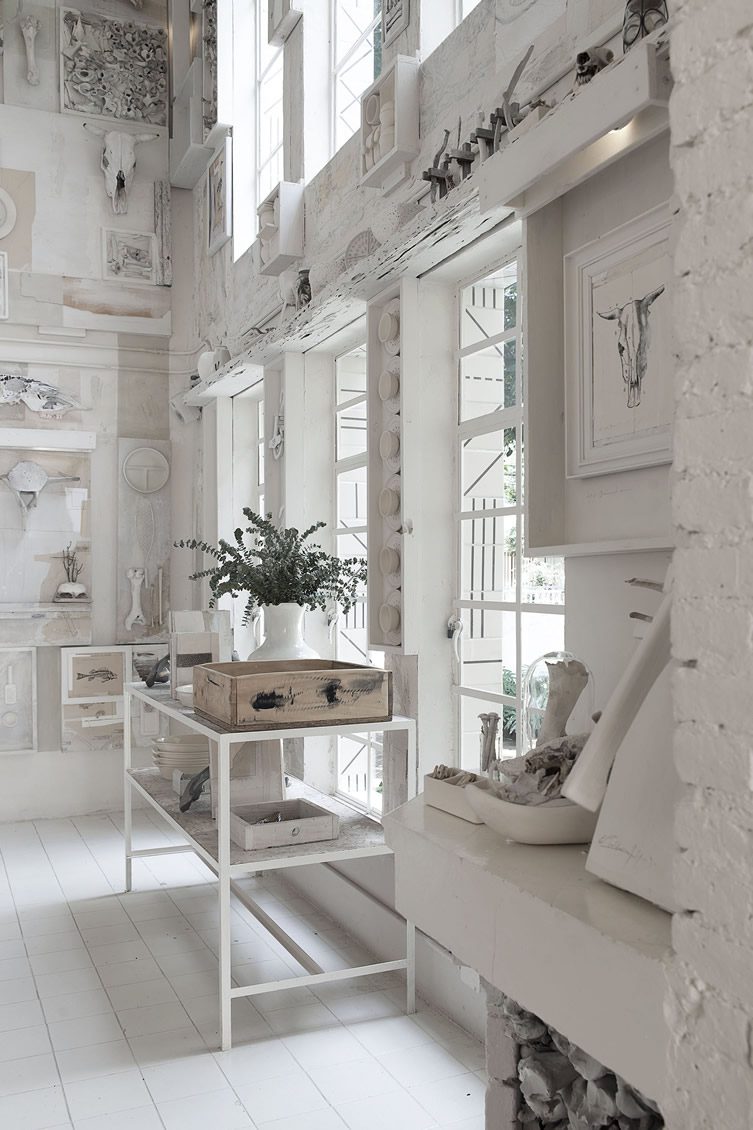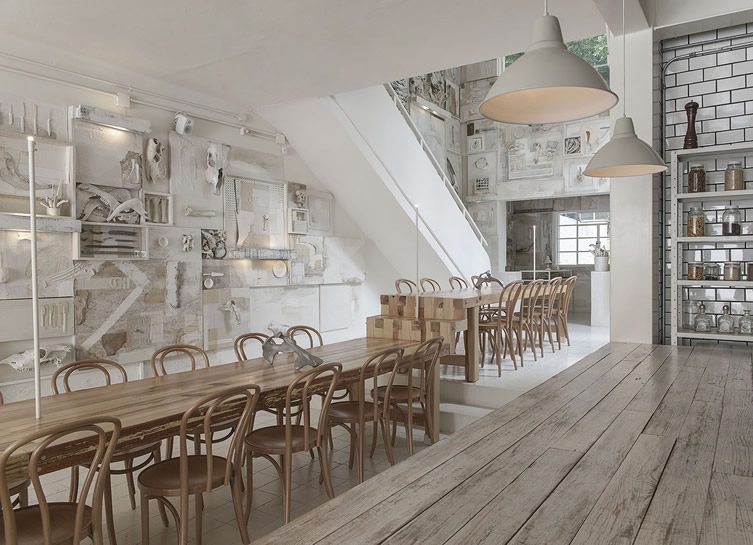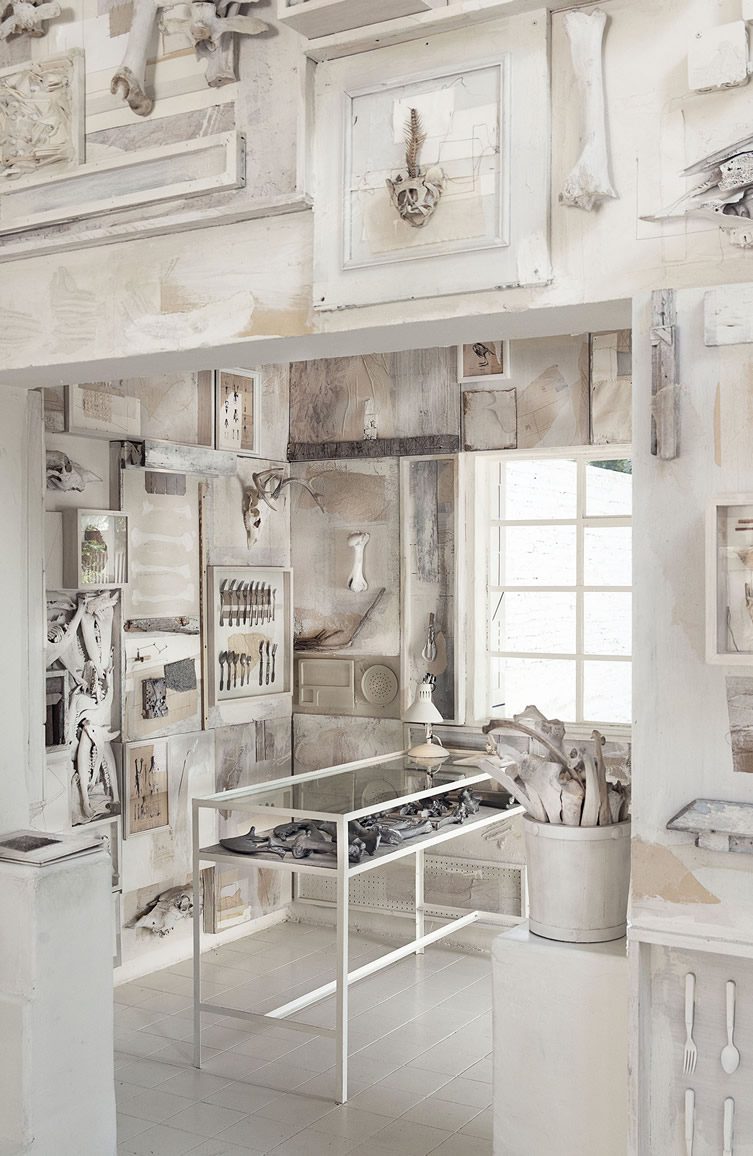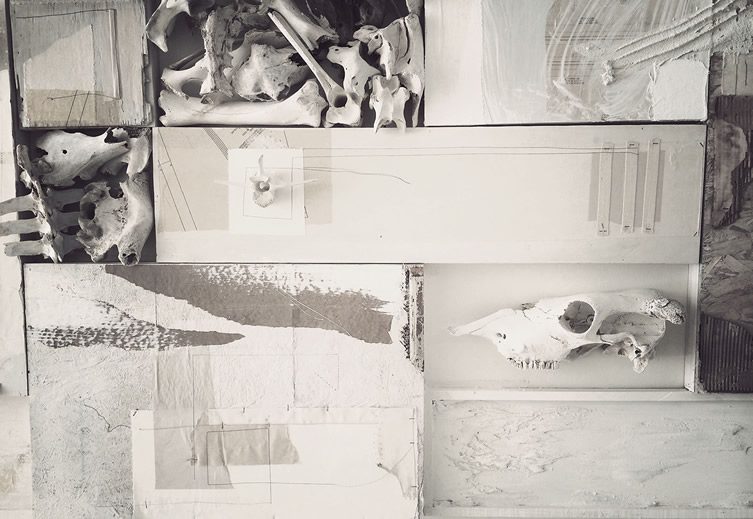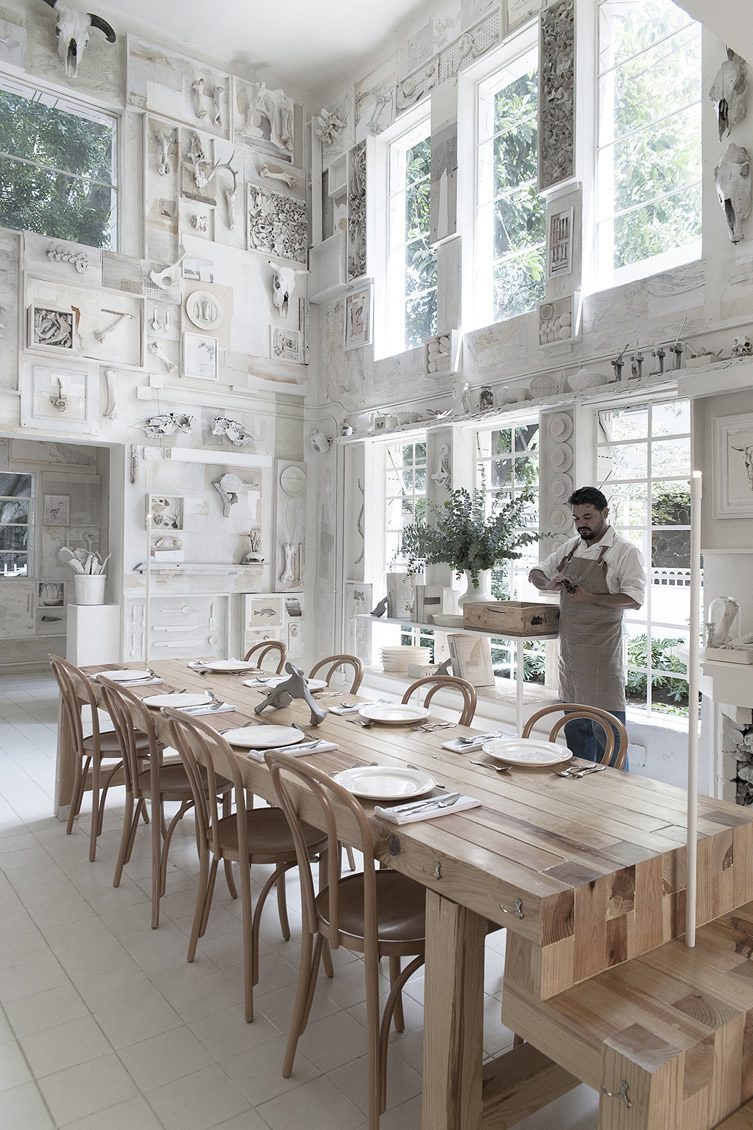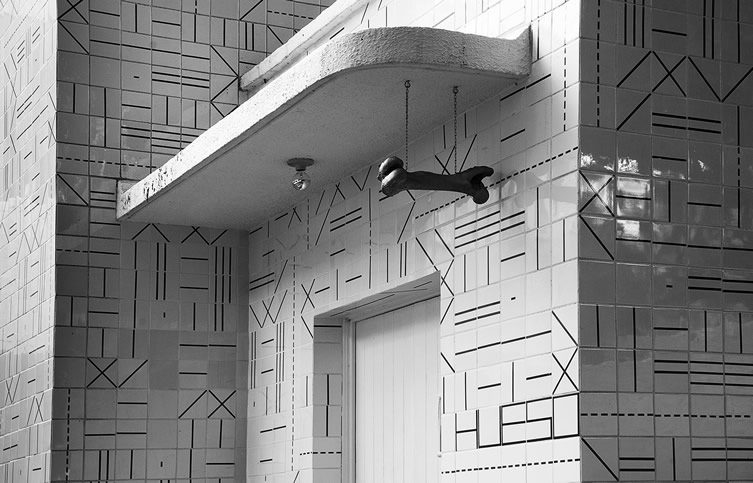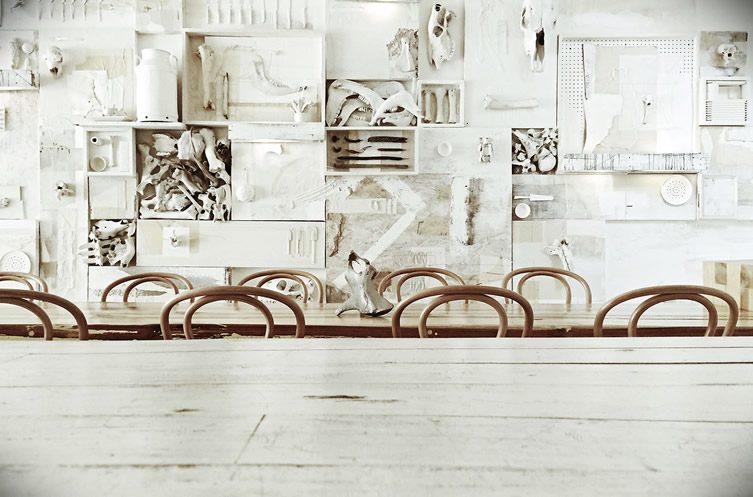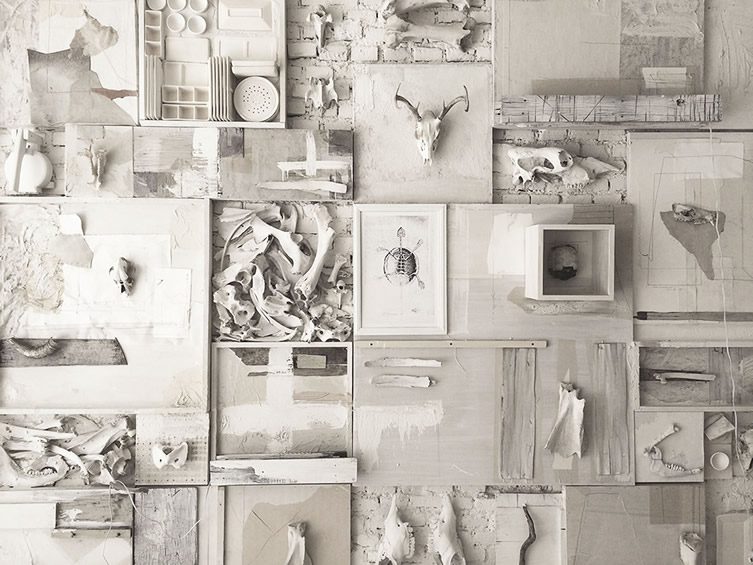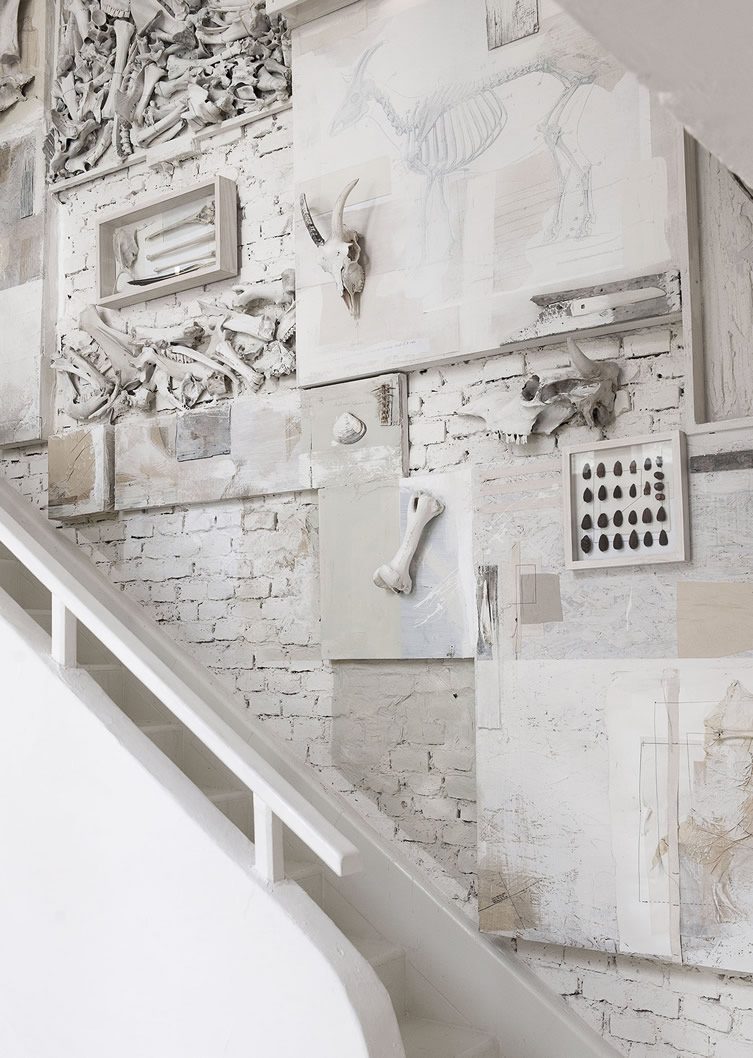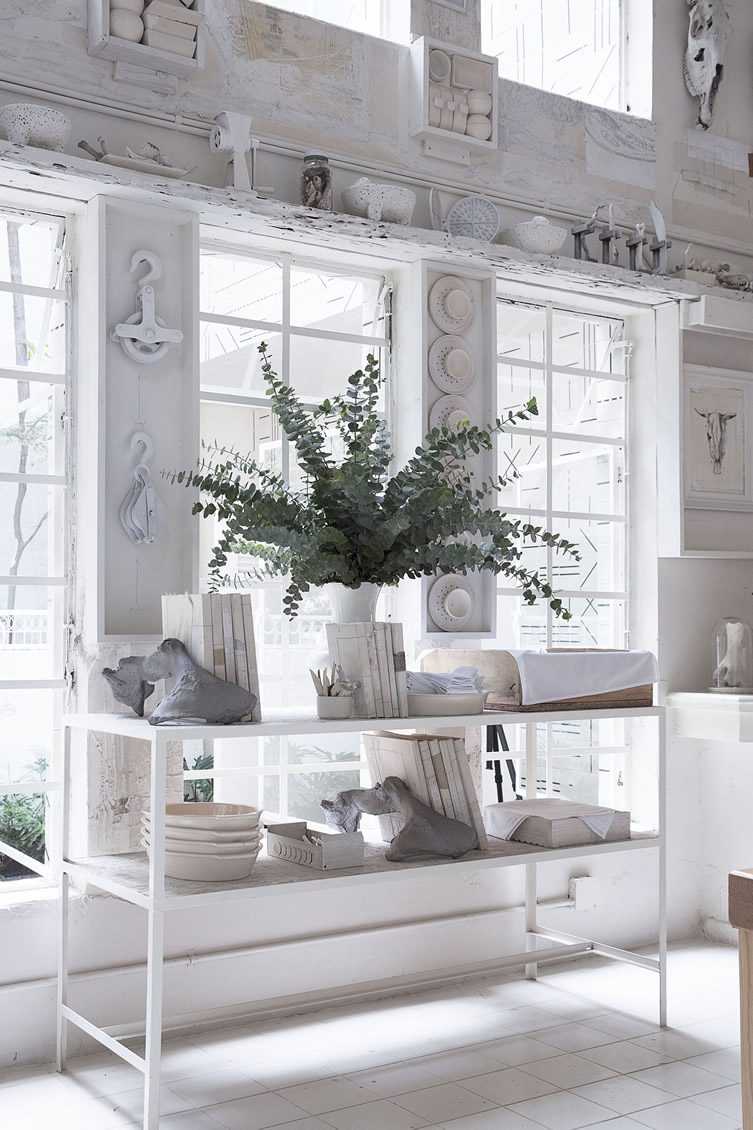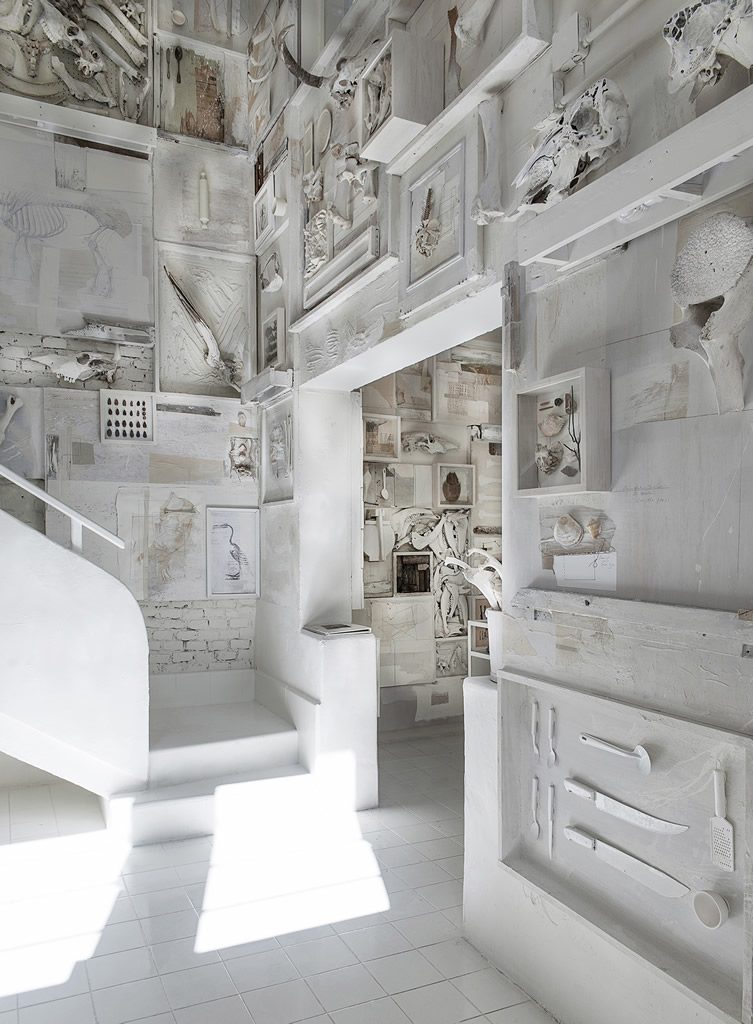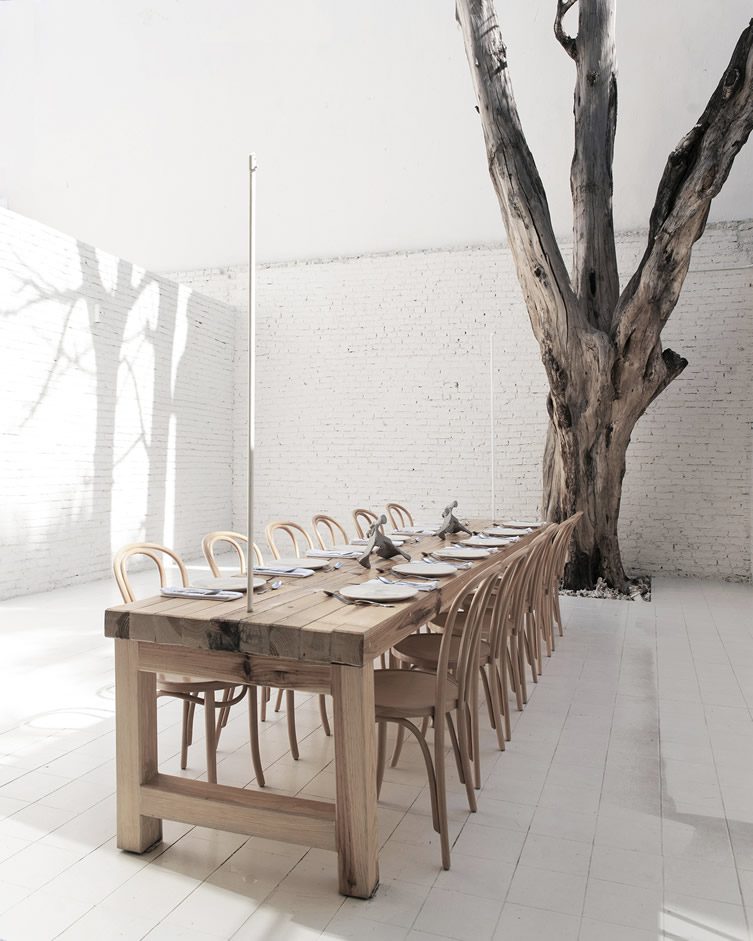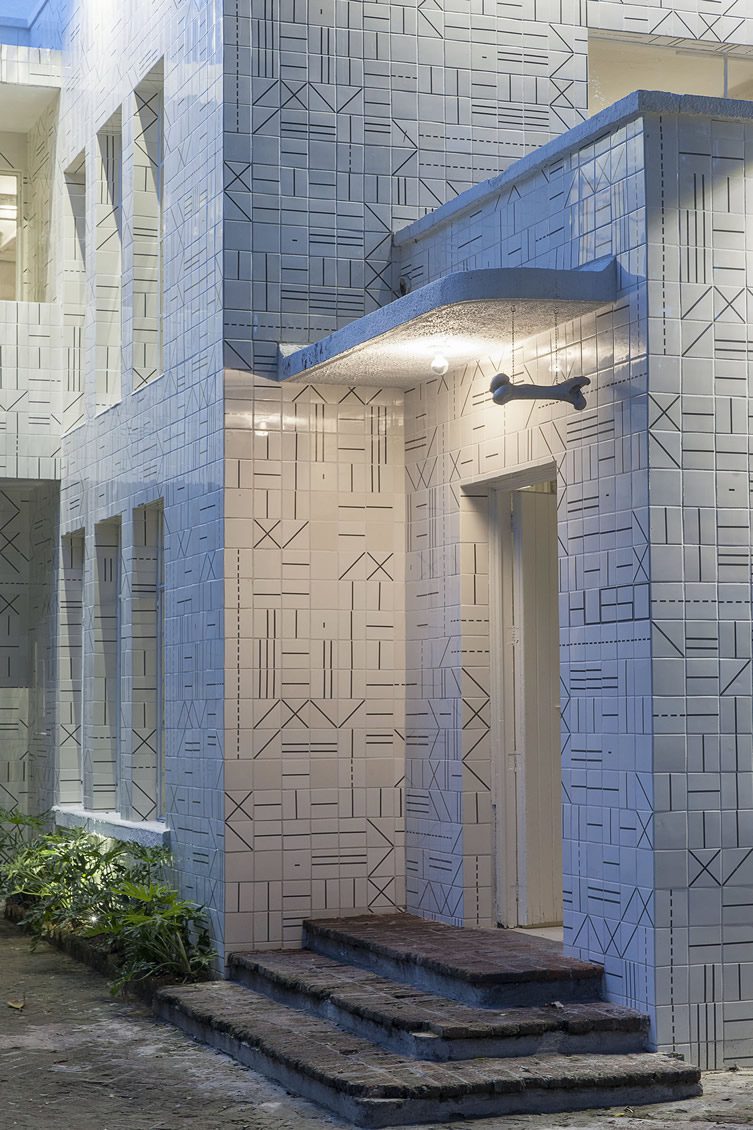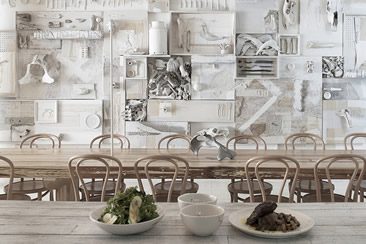Choosing bones as the main decorative feature of a restaurant is a bold move – there’s a danger that the experience might be so macabre as to put diners off their food – but Hueso in Gualdalajara, Mexico, manages to pull off the concept with aplomb leaving the appetite intact. The venture combines the culinary talents of Alfonso Cadena and the architectural abilities of Ignacio Cadena and it’s the stunning work of the latter that immediately grabs the attention at this recently renovated 1940s property which fully commits to its chilling concept.
Ignacio’s work at Hueso revolves around two “skins”, one applied to the restaurant interior and one to the exterior. Handmade ceramic tiles completely cover the outside, decorated with ethnic patterns that are arranged to resemble stitching, the effect all but obscuring the restaurant’s name hidden near the door. If the solitary metallic bone hanging above the entrance is a little spooky, it’s nothing compared to the venue’s second skin – a collection of around 10,000 painted bones and cast aluminium replicas cladding the brick walls on whitewashed mountings, arranged in display cases and lined up on shelves surrounding the dining areas, interspersed with kitchen utensils and anatomical line drawings. Smooth pale wood furniture lends a textural counterpoint to the jutting skulls and rock-like vertebrae while maintaining the overall organic materiality, and the ceramic tableware ties things together neatly with a needle and thread design.
